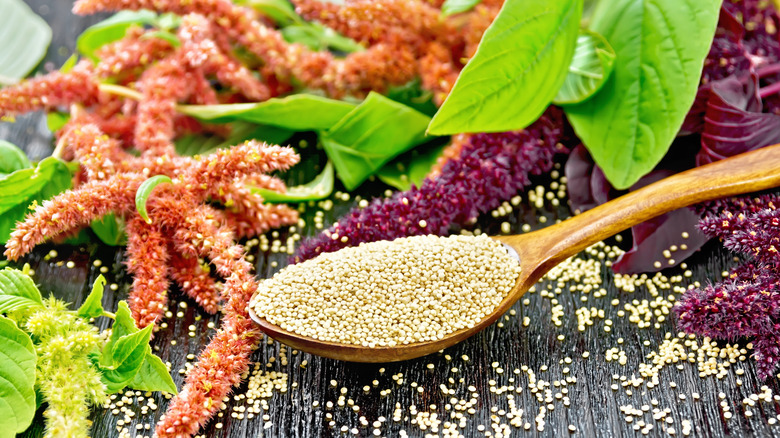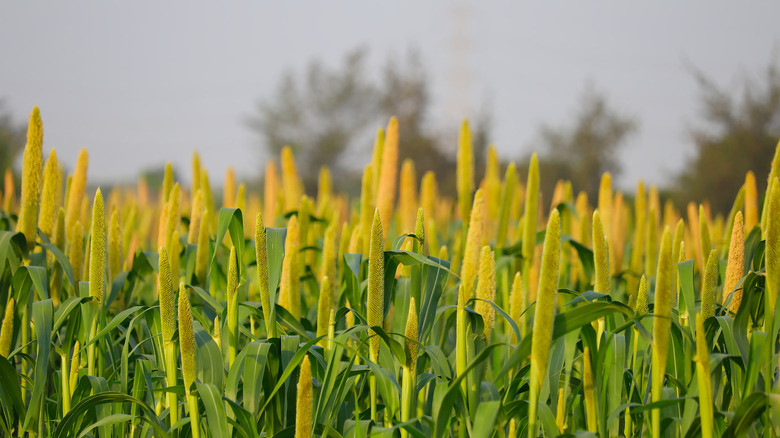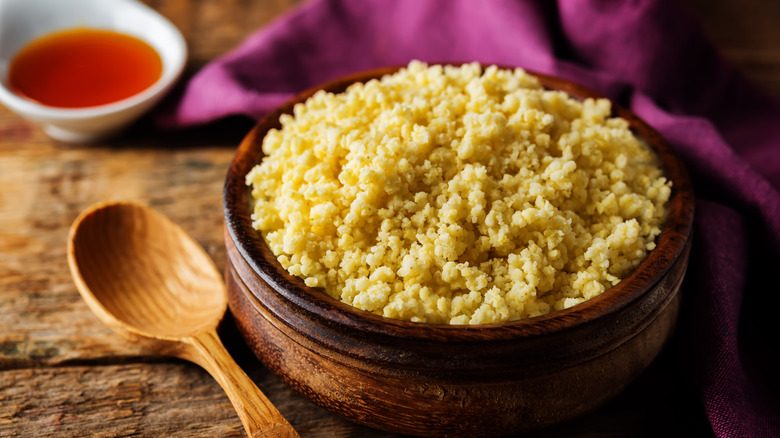Experts Say Ancient Grains Are Getting New Life In 2023
Rice, corn, and wheat are three of the most consumed crops in the world, comprising more than half of the average person's calorie intake. They also require an astonishing amount of water. A single kilo (or about 2 pounds) of rice takes between 3,000 to 5,000 liters of water to produce, as it grows best when submerged. A kilo of wheat requires an average of 900 liters of water, while corn — another thirsty crop — has been known to take nitrogen and other nutrients from the soil.
In the midst of a climate crisis and global food scarcity, 2023 food trends are pointing to ancient grains as an alternative to the unsustainable norm. Celebrity chef Maneet Chauhan, a judge on Food Network's "Chopped," told Southern Living that the African heritage grain fonio may be poised for the spotlight in the United States. "It's a healthy alternative to the regular over-processed grains that we usually eat," she said.
Meanwhile, other centuries-old grains are also getting attention for the comparatively modest resources they take to grow. It's time to get familiar with millet, amaranth, buckwheat, sorghum, and other overlooked — and climate-friendly — crops.
Nutritious and sustainable
Dan Saladino, the author of "Eating to Extinction: The World's Rarest Foods and Why We Need to Save Them," talks about grains like amaranth, sorghum, farro, and the like as being not only incredibly healthy but sustainable as well. Indeed, in addition to using significantly less water, ancient grains are rich in protein, omega-3 fatty acids, B vitamins, zinc, and fiber. That's because they haven't been stripped of their essential nutrients, unlike refined grain products like white and brown rice (which, to sway you even more toward ancient grains, are known to contain arsenic) and white flour.
When you consider that ancient grains have been grown the same way for thousands of years, their wholesomeness isn't surprising. For example, the grain teff, which is native to East Africa, has been around for over 6,000 years. Because ancient grains forsake modern farming practices, they use fewer pesticides and fertilizers to grow than more popular grains, meaning they're less disruptive to the soil.
The perfect substitute
Chefs, food creators, and home cooks are on the same wavelength as nutritionists and climate activists when it comes to ancient grains. Recipe developer Pierce Abernathy uses millet in his recipe for Okra-Stuffed Eggplant, adding protein and body to an otherwise veg-heavy dish. On Giadzy, Giada De Laurentiis replaces bulghur wheat with millet for a gluten-free riff on traditional Levantine tabbouleh. The celebrity chef swears that the grain swap "makes for a lighter, more refreshing" version of the dish, and also notes that she unconventionally includes strawberries for color and sweetness.
Cookbook author Maria Speck has authored not one but two tomes on ancient grains, including "Simply Ancient Grains," which includes recipes for every meal of the day. "Many of us still consider grains as a flavorless base to be rejected as plain," she writes. "But to me, ancient grains have subtlety and nuance, and it is their fine unique character I passionately wish for us to rediscover."
Clearly, many people are doing just that. In fact, Future Market Insights reports that the global millet market could hit more than $44 billion in the next decade. That's a lot of strawberry tabbouleh.


